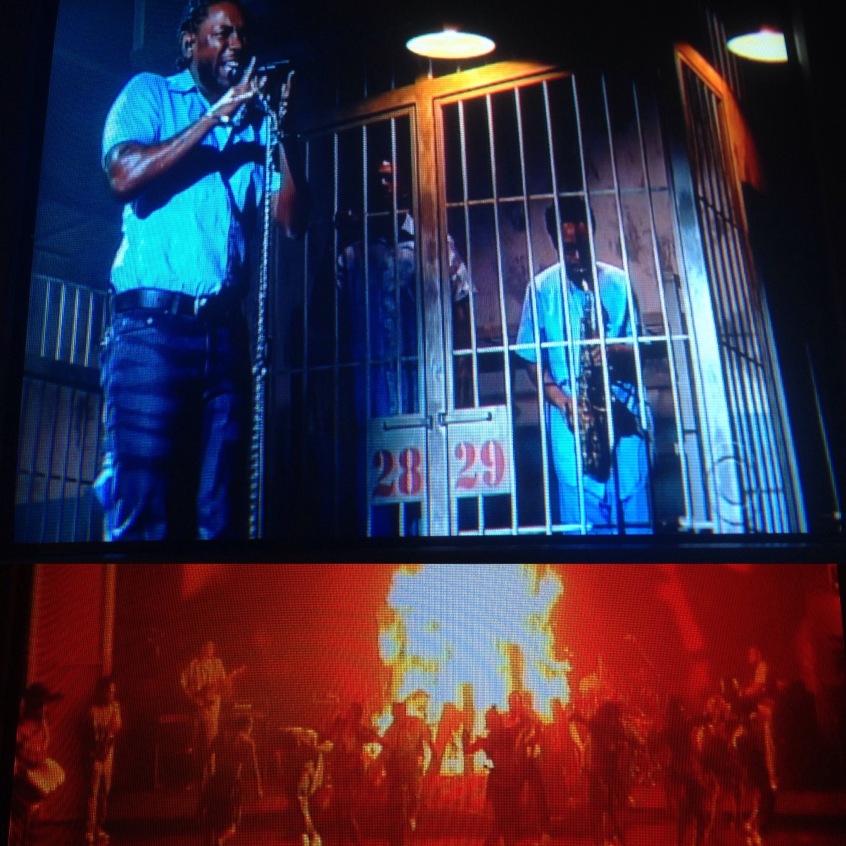 As the “Southern Belle of Hip-Hop,” Beyoncé redefines the ideal beauty for women of color through her image and sexuality, as well as her strong politics of Black feminism. Her beauty, curves, and sexuality visible in her many of her music videos, have impacted today’s hip-hop and contemporary pop culture. Since the 1990’s, the hip-hop dream world has undeniably objectified women as promiscuous, creating a very hypermasculinity and sex crazed music video culture (Durham 2012). The emerging hip-hop and rap videos in today’s music industries desire and objectify women with a “big booty” as a “classless ho” and nothing but “bootylicious,” presenting a damaging belief of hypersexuality of black women due to their voluptuous and “deviant” body type (Durham 2012). This sexually saturated performances and interpretations of Black women and their bodies are ironically desired because of their race and exotic features of a big butt. Beyoncé is a prime example of a real Black woman with “a thin waist and big booty” (Durham 2012), who uses her power and body to represent class, femininity and sexuality. She has driven herself to change the framing of women in many current hip-hop videos. She has effortlessly used her power and fame to reconstruct a better representation of women of color and their “big booty.”
As the “Southern Belle of Hip-Hop,” Beyoncé redefines the ideal beauty for women of color through her image and sexuality, as well as her strong politics of Black feminism. Her beauty, curves, and sexuality visible in her many of her music videos, have impacted today’s hip-hop and contemporary pop culture. Since the 1990’s, the hip-hop dream world has undeniably objectified women as promiscuous, creating a very hypermasculinity and sex crazed music video culture (Durham 2012). The emerging hip-hop and rap videos in today’s music industries desire and objectify women with a “big booty” as a “classless ho” and nothing but “bootylicious,” presenting a damaging belief of hypersexuality of black women due to their voluptuous and “deviant” body type (Durham 2012). This sexually saturated performances and interpretations of Black women and their bodies are ironically desired because of their race and exotic features of a big butt. Beyoncé is a prime example of a real Black woman with “a thin waist and big booty” (Durham 2012), who uses her power and body to represent class, femininity and sexuality. She has driven herself to change the framing of women in many current hip-hop videos. She has effortlessly used her power and fame to reconstruct a better representation of women of color and their “big booty.”
Earlier this year, Beyoncé released “Formation” which depicts an empowering image of the brutality of police towards Blacks. The song contributes to the hash tag movement #BlackLivesMatter (Kerr-Dineen) as well as her own pride and self-love of being an African-American woman. In her video, she uses her body to represent the power and pride she has for being a Black woman with a multicultural background singing, “You mix that negro with that Creole make a Texas bama.” Beyoncé chorographically dances with her Black female dancers who appear quite as confident and powerful rather than engaging in the stereotypical “ghettoness” of a “video ho” (Durham 2012). Beyoncé created a respectable yet nevertheless sexuality driven, platform to demonstrate a “classy” hip-hop video filled with her political views and outlook of current cultural issues. In “Check On It: Beyoncé, Southern Booty, and Black Femininities in Music Video,” Aisha Durham analyzes Beyoncé’s performance in her “Check On It” music video. Her engagement with her body, especially her curves and butt, empowers her to expose a level of pride and control of “male sexual gratification” (Durham 2012). Her lyrics, chorography, and style demonstrate her commitment of inspiring women to be powerful, admirable and sexually modest, rather than a “hot female that’s been around the block” (Dunham 2012). Her identity of a Southern Black belle empowers her to use her heritage in her music videos as well as embracing the middle class with cornrows in both the “Formation” and “Check On It” videos. As a respectable and iconic Black feminist, Beyoncé continues to run the world and slay by contributing to current political and cultural movements with her music and legacy.
Durham, Aisha. “Check On It: Beyoncé, Southern Booty, and Black Femininities in Music Video” in Feminist Media Studies, March 2012.
Kerr-Dineen, Luke. “Fox News Slams Beyoncé’s ‘outrageous’ Super Bowl Performance.” For The Win. USA Today, 09 Feb. 2016. Web. 11 Feb. 2016.








